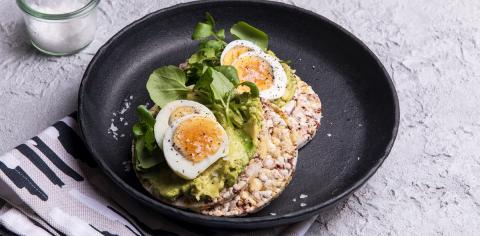GI and GL Explained. Does One Matter More than The Other?

You have probably heard of the term GI but what is it exactly and is there a factor which could be more important to consider? GI stands for glycemic index and is a ranking given to a food based on how much carbohydrate is in a food and how these carbohydrates will raise your blood sugar levels.
Foods are ranked from 1 to 100 in terms with three groups:
Low GI considered a score from 1-55
Medium GI from 55-70
High GI any score above 70
The higher the score the more quickly the food will raise your blood sugars and consequently your insulin or the hormone needed to take the glucose or sugar from your blood into your cells. An example is puffed rice cereals have a high GI compared to rolled oats with a low GI. The amount of fibre, how the food was cooked, how refined the carbohydrate is, the ripeness, the type of sugar in a food all effect the GI.
The goal for steady and sustained energy release is a healthy state for those who have diabetes but can also assist in healthy cholesterol levels and maintaining a healthy weight. Think about a roller coaster ride compared to a smooth train ride. The roller coaster ride is fun on occasion, but you don’t want to be experiencing this sensation all the time.
The story does not end there though, as your body is affected by not only the quality of the carbohydrates you eat (the GI) but how much carbohydrate is in that food called the glycemic load (GL). To work this out the GI is multiplied by the amount of carbohydrate as a percentage out of 100.
e.g. an apple with a GI of 38 and 13g of carbohydrate = 38 * 13/100 = 5
GL has its own rankings
Low GL 10 or less
Medium GL 11 – 19
High GI 20 or more
The final component is knowing how much a meal is going to affect your blood sugar as generally we eat multiple foods in a meal not just 1. To do this, simply add the GL of each food together. Over a day to keep your GL low, the goal is for your total GL for the day to less than 100. This means that you can have a meal with foods with higher GI and not have a negative impact on your blood sugars if most of the other parts of the meal are considered low GI.
Using the recipe available on this webpage for Avocado, eggs and watercress the ingredients included, and GI are:
- 3 CORN THINS® slices -CORN THINS® products are high GI, but due to the small amount of carbohydrates per slice, have a low GI load.
- 1-2 egg – no carbohydrate so no GI
- 1/2 a large avocado (mashed. For a bit of tang, add a dash of vinegar or salad dressing) – Low GI
- Watercress – Low GI
- Pepper & salt as desired – No GI
Overall, you can see this meal when including 3 slices of CORN THINS® product and the additional low GI ingredients can be a safe and healthy choice as part of a balanced diet for those wanting to make sure their blood sugar levels do not spike to high levels. It is important to consider the GL (as above), not simply the GI when eating a food.
Take home message: It is important to consider not only the GI of foods, but the GL when picking your foods. To find out more about GI and how different foods affect your blood sugar check out http://www.glycemicindex.com/.
Ashleigh Feltham (MNutrDiet)
Feed Your Future Dietetics
Accredited Practicing Dietitian | Accredited Nutritionist
W www.feedyourfuturedietetics.com